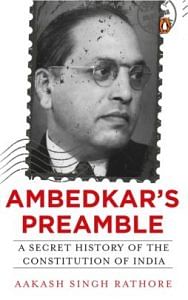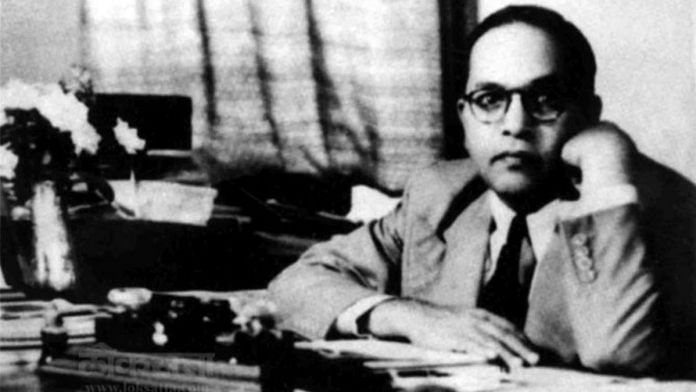The ‘equality’ clause in the Preamble to the Constitution of India today reads exactly as it did on 26 January 1950, and indeed exactly as it did when drafted by the Drafting Committee in February 1948:
EQUALITY of status and of opportunity . . .
It seems sparse. And sure enough, if we look back at one of its earliest predecessors, we see that some words were dropped from it. In Nehru’s Objectives Resolution (January 1947), the ‘equality’ clause read:
(5) WHEREIN shall be guaranteed and secured to all the people of India . . .equality of status, of opportunity, and before the law . . .
It may come as some surprise, however, that in Dr Ambedkar’s ‘Proposed Preamble’ from States and Minorities (March 1947), there was not really an ‘equality’ clause at all, at least not a positive one. Instead, there was an ‘inequality’ clause:
(iii) To remove social, political and economic inequality by providing better opportunities to the submerged classes.
Also read: To save the republic, India must read these books in 2020
Equality in the Constitution of India
The reason for the lack of an ‘equality’ clause in Dr Ambedkar’s ‘Proposed Preamble’ was the same as the one behind the economy of expression in the Preamble as it reads today. That is because both Dr Ambedkar’s 1947 Constitution from States and Minorities and the 1950 Constitution of India entailed extremely detailed and robust enumerations of the equalities guaranteed therein. Our Constitution—in the main articles beyond the Preamble—among several other guarantees, made illegal the state’s discrimination between citizens on the grounds of religion, race, caste, sex, or place of birth (Article 15); throws open all public spaces to all citizens equally (15[2]); abolishes untouchability (17); abolishes titles of honour (18); offers equality of opportunity in public employment (16); and, guarantees equality before the law and equal protection of the law, as justiciable rights (14). With all of these specific, justiciable rights appearing in the body of the Constitution, the Preamble was relieved of the burden of recounting them. It then only stated their essence in a sparse fashion.
This choice for a succinct ‘equality’ clause in the Preamble had the benefit of preventing debate on this phrase within the Constituent Assembly; however, what was spared [in] the Preamble only fuelled more argument when it came to the articles of the Constitution itself. Questions at that time were centred on the same issues as today: What exactly are we seeking to equalize when pursuing equality?
Also read: For CAA-NRC protesters, the Constitution is a talisman and preamble the war cry
Controversies around equality in India have existed since the birth of the Republic of India on 26 January 1950 and right up till the present day. This is evident in the earliest and the latest amendments: the very first amendment to the Constitution, back in 1951 (concerning Article 15, especially clause [4]), and the second most-recent amendment to the Constitution (concerning Articles 15 and 16, especially clause [6]) centre on equality and both have been extremely controversial. The principle of radical equality that we find in the Constitution has been a constant and enduring struggle for us over the last seventy years. And not just the last seventy years.
Equality has been of crucial concern for forefront critics of the origin, perpetuation and persistence of caste and gender inequalities in India, going as far back as twelfth-century author Basaveshwara and on with Kabir, Ravidas, Tukaram, Guru Nanak and Jyotirao Phule, to recent thinkers-activists such as Periyar, Iyothee Thass and, of course, Dr Ambedkar himself.
What Dr Ambedkar incorporated into the Preamble was, in a way, the distillation of this long history of critique. But Dr Ambedkar dated the struggle for equality much further back than the twelfth century. We can see this in the title he chose for a set of books he planned to write about the history of equality. It was to be called Revolution and Counter-Revolution in Ancient India. Thus, he dated the origins of the struggle for equality in India all the way back to ancient India.
 This excerpt from Ambedkar’s Preamble: A Secret History of the Constitution of India by Aakash Singh Rathore has been published with permission from Penguin Random House India.
This excerpt from Ambedkar’s Preamble: A Secret History of the Constitution of India by Aakash Singh Rathore has been published with permission from Penguin Random House India.




Equality is the soul of our Constitution. Shaheen Bagh one had not heard of. Jamia Millia not visited despite living in Delhi for several years. Saw video clips of protestors braving this year’s exceptional cold, welcoming the New Year by singing the national anthem. How can we question the foundational principle that all Indians are equal, have the same rights, must not be put to a higher standard to prove, earlier their loyalty, now their very citizenship. I personally feel very gratified to see these peaceful, nationwide protests. Ordinary Indians are asserting their decency. No force or ideology can shake the foundation on which our nation and nationhood rest.